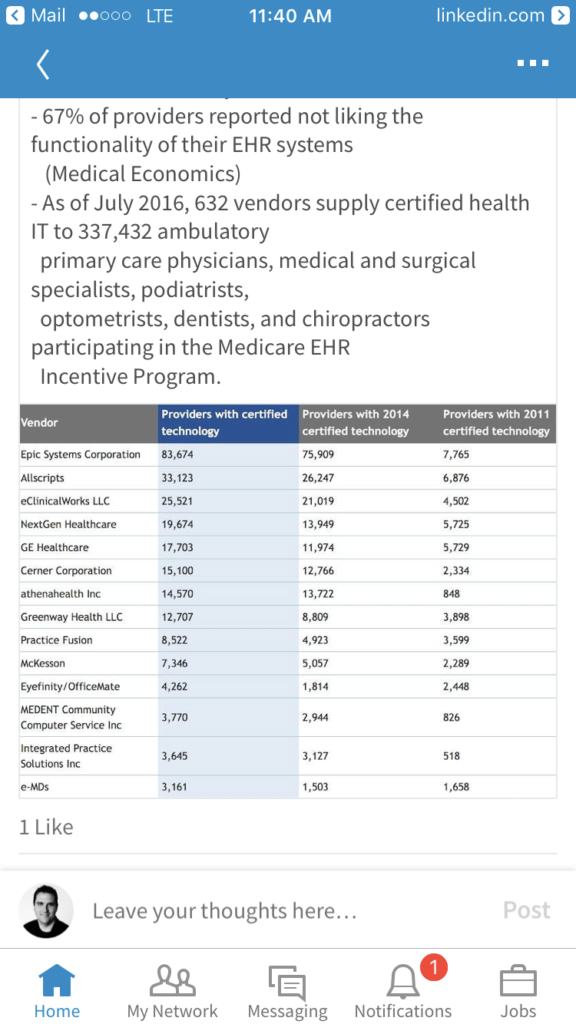A couple weeks ago I came across the following chart illustrating the growth in EHR adoption since 2011. It was in a LinkedIn post from Jeffrey L. Brown, CIO at Martin’s Point Health Care.

Source: LinkedIn post by Jeffrey L. Brown, CIO at Martin’s Point Health Care
This chart grabbed my attention, made me scratch my head, and shifted me into a deep state of EHR reflection and time travel. Where have we been since 2011? Where are we now? Where are we going?
The Past
During the period from 2011 – 2014, implementations were the huge focus for all EHR vendors. This coupled with the need to keep up with the changing regulatory picture, left little gas in the tank for EHR vendors to really focus on the quality of adoption and user experience. This period certainly fueled many of the well known EHR frustrations that have lived on as legend.
The Present
With growth in new implementations slowing in recent years, EHR vendors are getting after the task of helping their clients meet MACRA and MIPS requirements to maximize payments. Unfortunately, this doesn’t necessarily lead to breakthroughs in improving the experience. However, many proactive healthcare organizations are driving their own change through internally-driven optimization initiatives and finding creative ways to get their EHR working with other complimentary tools via integrations and interoperability.
The Future
This is where it gets fun!
I remain hopeful that we are hitting a stage that will be much more heavily centered on client satisfaction… and even client delight! With the EHR market reaching a point of maturation, growth will be driven by wooing clients away from competitors. This will require vendors to spend time and resource on ensuring the user experience is beyond merely tolerable. Those who excel in client engagement, and follow-through by implementing meaningful changes to support usability will win. They will potentially win big.
Additionally, I believe that those with their eyes, and strategy, squarely aimed on being the best true EHR solution will best positioned. By this, I mean vendors that successfully resist the urge to be things they are not, will ultimately deliver delightful usability. It’s all about focus.
I expect the continuation of the trend towards surrounding a solid core EHR with supporting best-of-breed solutions to do things that an EHR only does marginally well. Examples include customer relationship management, non-clinical document management, scheduling, and robust workflow management.
It’s crazy to think about how far we’ve come in the EHR arena in the last 6 years. It’s even crazier to think about how much opportunity is ahead of us.
Fast forwarding to 2023… as I again scratch my head and reflect on the thrilling topic of EHR, I’m predicting gray hair on my head and stories that are chalk full of delightful client experience. Call me an optimist!
Always here to help.

